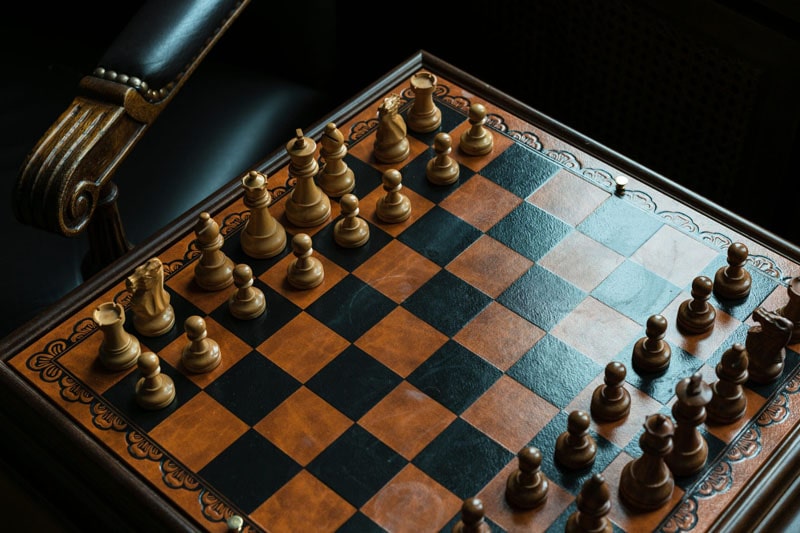Chess boxing is a hybrid sport. It combines chess‘s strategy with boxing’s intensity. It began in the early 2000s. Dutch artist Iepe Rubingh created it, inspired by an Enki Bilal comic. It has since evolved into a niche but fascinating sport. It has gained a following for its blend of mental and physical challenges. In a chess boxing match, competitors alternate between chess and boxing rounds. This tests their mental acuity and physical endurance equally. This article examines chess boxing rules and structure. It details how this innovative sport operates and its appeal.
Rules of Chess Boxing
A chess boxing match is a blend of two distinct disciplines: chess and boxing. The match alternates between these two activities. It tests both mental and physical skills. Here’s how a typical chess boxing match is conducted:
- A chess boxing match has 11 rounds: 6 of chess and 5 of boxing. The match begins with a round of chess and ends with a round of boxing.
- Chess rounds are usually 4 minutes long. Boxing rounds last for 3 minutes, similar to traditional boxing matches.
- During chess rounds, players use standard chess rules. Each player has a chess clock with a 12-minute countdown. The chess game continues until a player achieves checkmate, resigns, or runs out of time.
- During boxing rounds, competitors must follow standard amateur boxing rules. They wear boxing gloves, headgear, and protective gear. The aim is to score points through effective punches or to achieve a knockout. Boxing rounds are judged based on the number of clean hits, technique, and overall control.
- The switch between chess and boxing rounds is quick. Players must be ready to shift from a mental to a physical state, and vice versa. This constant switching is one of the most challenging aspects of the sport.
Chess Component
In chess boxing, the chess part is vital. It demands both strategy and quick thinking. Here’s a closer look at how chess is played within this hybrid sport:
- Chess Rules and Regulations: During the rounds, competitors must follow standard chess rules. This includes a chessboard, 32 pieces, and their standard moves. The goal is to checkmate the opponent’s king. This means placing it under attack with no legal moves to escape.
- Chess in Chess Boxing: Chess rounds test strategy and time management. Each player must make their moves within a fixed time limit set by their chess clock.
- Time Control: Each player has a chess clock with a 12-minute countdown. The clock is visible to both players, and it is essential for maintaining the pace of the game. Players must decide quickly to avoid time pressure.

Boxing Component
The boxing part is a tough physical test. It contrasts sharply with the mental rigor of chess. Chess boxing matches follow amateur boxing rules. They include these key aspects:
- Scoring: Points are awarded based on the number of clean, effective punches landed. Judges score each round on factors like technique, accuracy, and control.
- Rounds: Each boxing round lasts 3 minutes. Competitors aim to land punches and avoid getting hit.
- Equipment: Fighters wear standard boxing gear for safety. It includes gloves, headgear, and mouthguards.
- Fouls: Common boxing fouls are hitting below the belt, holding, and hitting after the bell. Fouls can result in point deductions or disqualification.
- Equipment and Safety Measures: Safety is a top priority in chess boxing. Competitors are equipped with appropriate boxing gear to minimize the risk of injury. This includes well-padded gloves and headgear designed to protect against head injuries. Proper medical supervision is also present to ensure the fighters’ well-being.

Scoring and Winning in Chess Boxing
In chess boxing, the rules for winning are as unique as the sport. They use the results of both chess and boxing. Here’s how scoring and winning are managed:
Scoring:
- Chess Scoring: A player wins a chess round by checkmating their opponent’s king. This ends the chess portion of the match. If a player’s chess clock runs out, their opponent wins the chess round by default.
- Boxing Scoring: In boxing rounds, judges score based on effective punches, technical skill, and control of the bout. Points are awarded for clean hits, and the boxer with the most points at the end of the round wins that round.
Winning:
- Checkmate: A player wins the match if they checkmate their opponent in the chess rounds. It does not matter what happened in the boxing rounds. This is the ultimate goal of the chess component.
- Knockout (KO): If a boxer knocks out their opponent, they win. This ends both the boxing and chess matches.
- Decision: If the match goes the distance with no checkmate or knockout, the winner is the boxer with the higher score. The competitor with the highest score across the boxing rounds wins.
Conclusion
Chess boxing is a fascinating hybrid sport. It combines the mind of chess with the body of boxing. This tests competitors in both strategy and endurance. It does this by alternating between mental and physical rounds. The unique format of chess boxing entertains spectators. It also rigorously challenges the athletes. The sport’s unique mix of disciplines requires competitors to excel in both chess and boxing. They must quickly adapt between these two very different competitions. With competitions and rising stars, chess boxing is growing in popularity. It is attracting new fans and participants. If you like chess, boxing, or both, try chess boxing. It offers a unique mix that showcases the best of both worlds.







